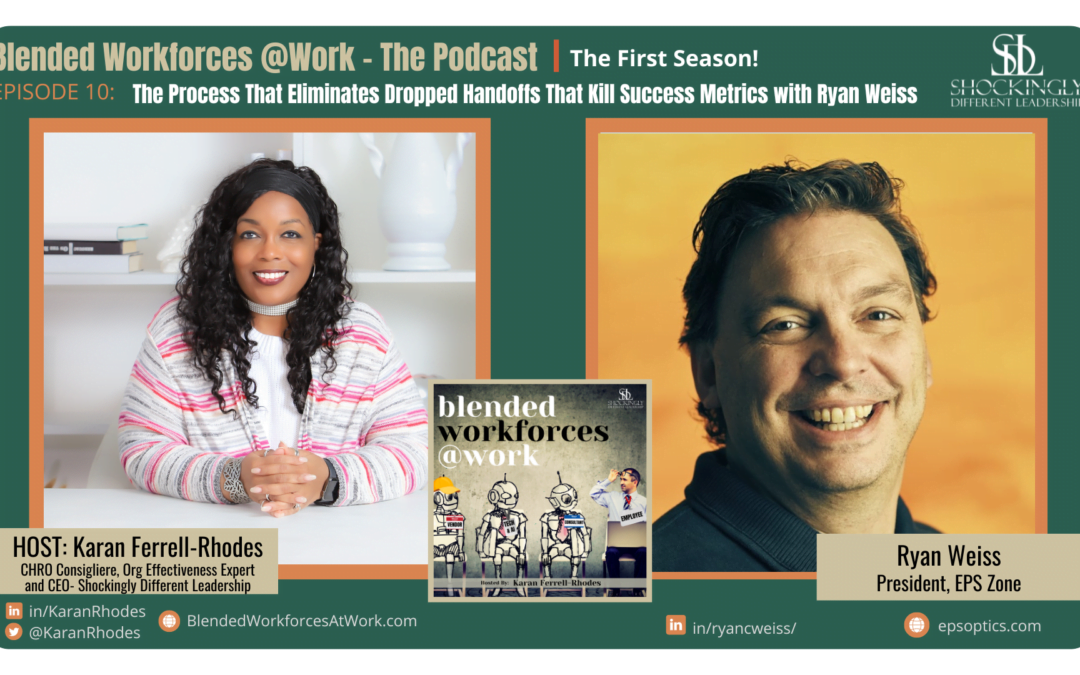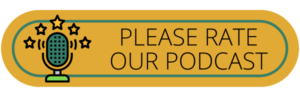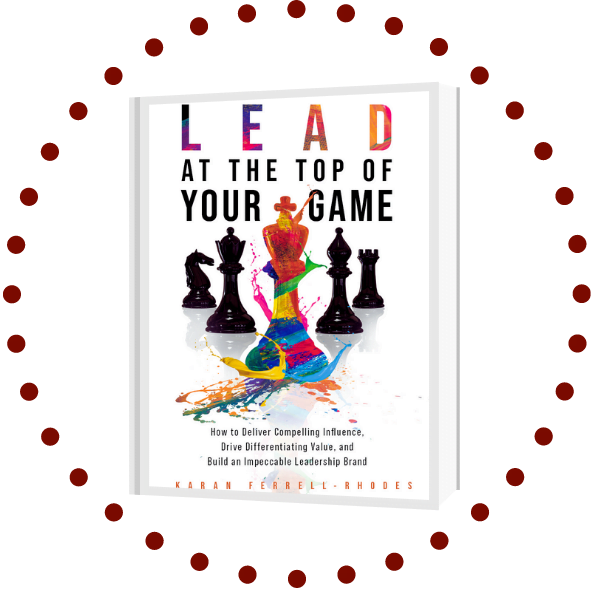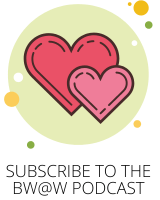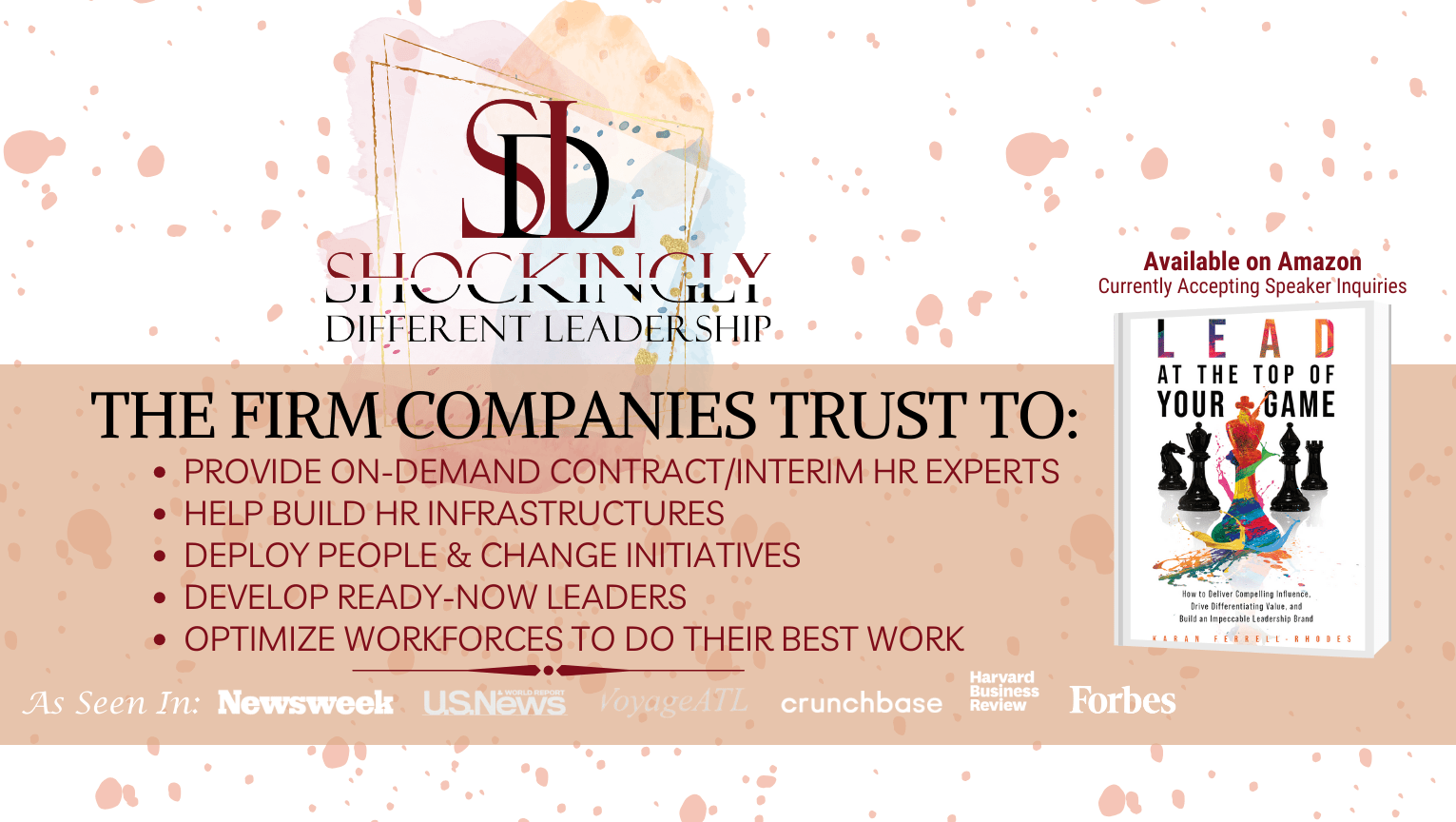IN THIS EPISODE, KARAN FERRELL-RHODES INTERVIEWS RYAN WEISS.
Frustrated by handoffs between teams? Say goodbye to inefficiencies with the 5-step OPTICS™ System!
Ryan Weiss, the visionary president of Effective Performance Strategies, is pioneering a paradigm shift in business optimization with the groundbreaking Optics System. In our conversation today, Ryan unveils the Optics system’s transformative potential, from its inception to its streamlined evolution. He shares how it identifies root causes, resolves pain points, and empowers cross-cultural collaboration. Also, Ryan illuminates the path to business success through innovative processes and values alignment.
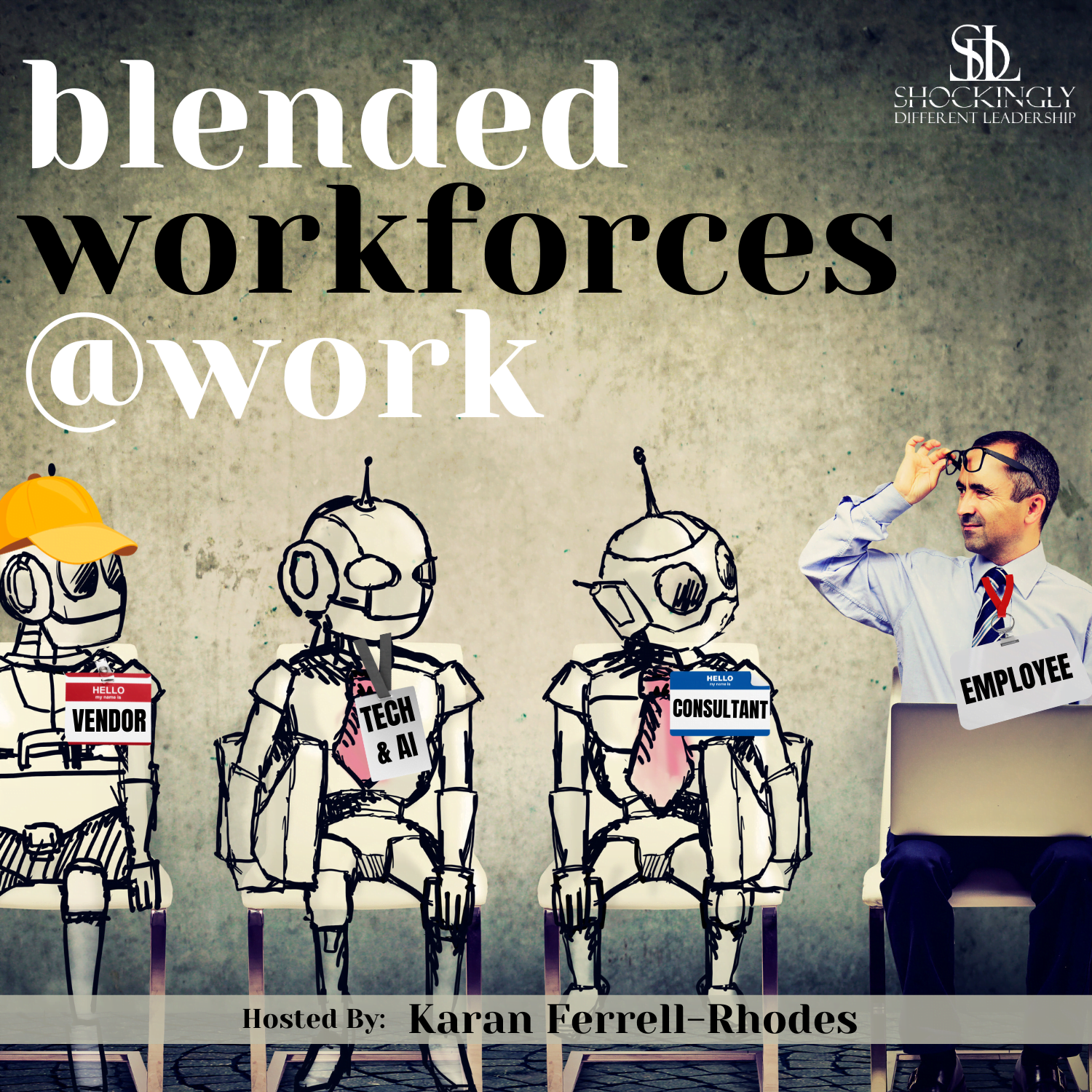
Posted by
SDL Media Team
Rather view our video podcast?
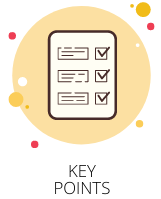
WHAT TO LISTEN FOR:
- What is the core concept behind the optics system?
- What prompted the evolution of the optics framework?
- How does the SIPOC framework enhance clarity and collaboration?
- When is it important to leverage cross-cultural strengths?
- What are the key criteria for selecting effective consultants and vendors?
- How does a company stay focused amidst various opportunities?
“Blended Workforces provide an incredibly powerful platform for success if you leverage it in the right way.”
FEATURED TIMESTAMPS:
[03:25] The Dual Optics Approach to Business Success
[07:16] The Evolution of the Optics Framework
[09:19] How the Optics System Transforms Business Processes
[11:24] How the SIPOC Framework Enhances Clarity and Collaboration
[14:14] Integrating SIPOC in the Optics System for Effective Process Improvement
[16:08] The Key to Effective Blended Workforces in the Optics System
[18:30] Key Criteria for Selecting Effective Consultants and Vendors
[20:40] Signature Segment: Ryan’s entry into the LATTOYG Playbook: Staying Focused Amidst Opportunities
[23:24] Signature Segment: Ryan’s LATTOYG Tactics of Choice: Leading With Courageous Agility
[25:55] Ryan’s Books
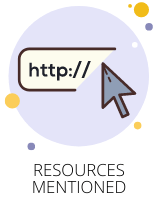
ABOUT RYAN WEISS:
Ryan Weiss is passionate about engaging with business leaders interested in positively influencing the world and has over 20 years of success leading teams, programs, and operations to drive business results and profitability. His strong appreciation for diverse cultures was gained through extensive international work experience, living in 3 countries, and leading global teams across more than 20 countries.
Ryan earned degrees in Chemistry (uiuc.edu) & Finance (ku.edu), creating a foundation for understanding businesses’ technical, leadership, and financial needs to thrive. Throughout his career, he created what is now known as the OPTICS™ System to enable companies to align people & processes for accelerated performance. The OPTICS™ System has been designed as a simple way for leadership teams to align for improved performance. He is currently writing his second book, which is scheduled for release in 2024. The book will allow readers to understand your challenges through a new lens of clarity.
LINKS FOR RYAN:
- Website: epsoptics.com/
- LinkedIn: linkedin.com/in/ryancweiss/
- OPTICS in Action Podcast Link: podcast.epsoptics.com/
ADDITIONAL RESOURCES FOR YOU:
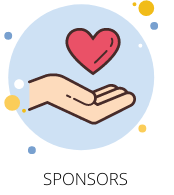
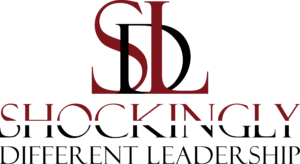
Episode Sponsor
SDL is the go-to firm companies trust when needing to:
- supplement their in-house HR teams with contract or interim HR experts
- implement leadership development programs that demonstrate an immediate ROI and impact on the business

Episode 10 | The Process That Eliminates Dropped Handoffs That Kill Success Metrics with Ryan Weiss
Ryan Weiss 00:00
When you didn’t have a very clear, simple framework that defined these roles and responsibilities, that performance criteria, and the process, not just the process, what the process needed, and what was needed from the process. If you didn’t have a very good way of doing that, and people would really get frustrated.
Karan Rhodes 00:03
Blended workforces are one of the hottest talent strategies today, where employers are using a mix of traditional employees with external resources like independent contractors, coaches, consultants, vendors, and technology solutions, all in order to enhance competitiveness, ensure cost flexibility, and expedite business goals. But how are the successful companies infusing blended workforces into their business strategy? And what are the critical success factors and pitfalls to avoid during implementation? And on the flip side, what does it really take for suppliers to improve their chances of finding and landing contract opportunities? The devil is in the details, my friends! I’m your host, Karan Ferrell Rhodes, and it’s time to get smarter about Blended Workforces at Work! Hello, my dear superstars, this is Karan and welcome to another episode of the Blended Workforces at Work podcast. We are so pleased to have you here with us today. And as a double double pleasure, we’re super excited to have a fantastic guest by the name of Brian Weiss, who is the president of EPS Zone, which is a high performance firm that uses his own proprietary system that he created called the Optic System, which he’s gonna tell us about that in a minute. But he uses the system to enable companies to align people and processes for accelerated performance. So welcome to the show, Ryan.
Ryan Weiss 01:34
Thank you so much, Karan. I am so honored to be here. I’m excited about this topic, and I think it’s gonna be a lot of fun.
Karan Rhodes 01:40
Oh, I know it’s gonna be a lot of fun. Absolutely. Well, before we dig in to our topic of blended workforces, we’d love to learn a little bit about you so far, as much as you feel comfortable. Can you give us a sneak peek into your life outside of work?
Ryan Weiss 01:55
Absolutely. So I have a wife of 25 years, and we have four children, our oldest children are twins. And in July, we are expecting our first grandbaby.
Karan Rhodes 02:10
Oh, congratulations.
Ryan Weiss 02:13
I spend so much time with family and faith and friends and all of all of these things. But finances and business and blended workforces is all sort of blends together so
Karan Rhodes 02:26
It does! Well, awesome. Well, yes, definitely early congratulations is so happy of the new, exciting addition to come and I know you’re just gonna eat them up. And
Ryan Weiss 02:42
it’s gonna be a lot of fun. It’s a new a new stage of life. Yeah
Karan Rhodes 02:46
it is. But a fun way. Definitely a fun way. Well, awesome. Well, let’s start off, Ryan by Can you tell us a little bit more about your company and some of the priorities that you all have right now? And and can you tell us a bit more about the optics system, I’m dying to know,
Ryan Weiss 03:09
Yeah, happy to share. So so my company I founded it about eight years ago. Now. It’s almost exactly eight years ago, after about 17 years in the corporate world. And my degrees were in chemistry and finance. So I was like a very process focused person. It was all about process. But what I learned very early in my career was that process without people got wasted, you could create amazing processes, you can, you know, fill up a whiteboard, fill up a wall with post it notes, and you’ll create what theoretically would be amazing processes. But without people, they would get wasted, they just wouldn’t work. And the other thing that I learned through my career was that process, I’m sorry, the people without process get frustrated. So when people don’t have a good process, they don’t have a good system, they don’t have a good way of doing things. They get frustrated. And this was true in manufacturing. This is true in the business process outsourcing teams that I lead. This is true in construction, and you name it across the board. If you go into Starbucks, if they have a bad process, you’re gonna get frustrated, people get frustrated if a process is not good. So this intersection of people in process is really what I founded my business around. And really the concept of optics. The word optics has two meanings. One is the study of light. It’s a very technical sort of thing you think about optics, your glasses and lenses and things like that. The second one is the perceptions of people about a situation. And so when you think about those two definitions of the word optics, that’s really what our system is all about. It’s about of creating processes, and enabling people to, to intersect with that. So the blended workforces that you you’ve talked about and that we’ve been chatting about a little bit. That’s exactly it, they being able to enable people to have handoffs and work together. So I have an outsourced team, I’ve got a team and a global team. I’ve got folks in Germany, the Philippines, and here in the United States, and coordinating with all of them and with our customers and with, you know, you’ve got to have crystal clear expectations around those things. So we have an optic system, the software platform, we vet our outsourced team, and we do consulting in between to help enable companies to be more successful.
Karan Rhodes 05:46
That is amazing. And your Optic System, is that a tech platform?
Ryan Weiss 05:52
Yep. So it’s a cloud based platform, where we walk folks through the five steps that enable you to define a work stream to define the particular handoffs that need to happen to define the accountability and responsibility. And also to define the metrics or the performance expectations, the quality value and speed, performance expectations of those core processes. So we created this platform, and we work with clients through those through the five steps to enable them to look big picture, and then get their processes documented in support of the big picture.
Karan Rhodes 06:33
Oh, my gosh, there’s probably so many clients that need that I’m wondering, do the bulk of companies out there know that they need that assistance, because I know some enterprise level firms, which is a lot of our market, they kind of think they have everything, you know, signed, sealed and delivered? But I’m wondering if that’s true, number one, do they really? And then secondly, you know, what types of clients do you come across that kind of know that they need to up their game in this area, and that your solution is perfect for them?
Ryan Weiss 07:10
Well, I’ll say this…so a couple of things. So I, I spent a bulk of my career at a 20 billion euro global chemical company. And not all large companies have it together either. But I think, working global roles, so living in Singapore, living in the Philippines, living in North America, working with teams in Europe and South America, what I really that’s where a lot of the system evolved from was the learnings that I had living all around the world and managing teams, that when you didn’t have a very clear, simple framework that defined these roles and responsibilities, that performance criteria, and the process, not just the process, what the process needed, and what was needed from the process. If you didn’t have a very good way of doing that, and people would really get frustrated. I mean, when I was in the Philippines, I would have stakeholders in North America and Germany, like, you know, why isn’t this happening? Why isn’t that happening? Well, when I really looked at the communication, and the cultural differences and all these types of things, you’ve got to have good clarity. And that’s really how the optic system evolved was taking all that complexity, and boiling it down to five simple steps to enable a framework for these conversations to be at.
Karan Rhodes 08:32
I love that, I love that. Well, let’s peel back the layers of the onion a little bit and go deeper on the lens of a true blended workforce, you know, your mix of traditional employees, external talent and technology, that whole combination is probably very obvious. They listeners, they listen to the podcasts of why process is very important. But what I really love is how you all zone into handoffs and making sure handoffs are completed, appropriately on time and to who needs to know. So can you talk a little bit more about the high risk of broken handoffs between departments and consultants that are working with your team?
Ryan Weiss 09:19
Yeah, yeah, no, that’s a great question. And sometimes when business executives are looking at a problem, they see the symptoms of a problem. For example, I’ve had a client who had, who was really looking at this billing problem that they’re having they were having this problem with their invoicing process, and there’s all these challenges. And when we went through and really did the optic system with them, what we found was that they had four methods of order entry on the front end of their process that then lead to multiple different paths that were happening in production and operations, which lead had to more pads in shipping and in that process. And then so if you think about sort of customer service order entry, going to manufacturing production, going to shipping and warehousing, going back to customer service for the billing process, what we found by starting to dig into the billing process problem was it was really an order entry problem. Nothing wrong with the billing is incredibly easy. If everything happens correctly, upstream, sending out invoices, incredibly easy, right? They were struggling because they had these four different methods, Legacy methods of putting, you know, orders in at the front end, which was just causing chaos all through their system. So in just a couple of months, we solved that problem and got everything so much more streamlined. But it wasn’t obvious the problem that they told me they had wasn’t an order entry problem. They told me that an invoicing problem a billing problem, but when we live in causing it, you see three handoffs going on there, that if those handoffs don’t go, well, then you have a billing problem.
Karan Rhodes 11:08
So can you break that down just a little bit for us and give us a couple of tips that companies need to make sure they do in order to not have that miss or that…what am I trying to say…
Ryan Weiss 11:26
The drop?
Karan Rhodes 11:26
Yeah, So what can they do to kind of help avoid that?
Ryan Weiss 11:31
I learned a tool, it’s a basic framework, probably going back 20 something years in my career. And I’ve literally done this, use this framework to use this tool 1000s of times over the last 20 something years. And it’s a wonky sounding acronym. It’s called a S A I P O C. But I learned about this tool at the same time, that was I took Dale Carnegie’s How to Win Friends and Influence People, I was very intuitive.
Karan Rhodes 11:57
Yea.
Ryan Weiss 11:58
And he said, If you want to be interesting in the conversations, talk to people about what’s important to them. So I started just using this framework, this S A I P O C, and I’ll tell you what it is. And it started just becoming so clear to me that it’s such a simple framework that enables people with lots of perceived complexity, to bring it down to a very, very focused way of looking at it. So the acronym stands for suppliers, inputs, process, outputs, and customers. So it’s just those five things. But if you think about it, that P in the middle is process, and lots of organizations, big companies, small companies, whatever, they’ll need to go, we have a process or we need a process, we document a process. And they think about process, they just think about that piece of it. Well, what the sidewalk does is it intersects people and process when you think about suppliers and inputs going into the process. And then you think about the outputs of the process and who the customers are of those outputs. All of a sudden, you’ve just collided people, what do I need to do my process? And what do people need from me when my process gets done? So it’s an incredibly simple framework, that was literally five columns with some rows. But I did this with a Chinese diaper manufacturer in Mandarin Chinese through a translator. And at the end of an hour, he looked at me said, do you understand my business better than my people do?
Karan Rhodes 13:40
Wow. That’s amazing!
Ryan Weiss 13:42
Because I’m like some genius and diaper manufacturing, no idea how…
Karan Rhodes 13:46
Sure you are! Sure you are.
Ryan Weiss 13:48
That framework enabled that conversation and literally 1000s more like it. We’re helping you get clarity, not just of process problems, but have expectations of what do I need from others? And what do others need from me? In a very, very simple template, very simple framework.
Karan Rhodes 14:08
I love that. And you know, at sometimes there’s some more simple the better, and is a very, very powerful tool. Now, I’m curious, do you encourage your clients to document this? And then have conversations across departments? Or how do they use that tool, I guess is my question.
Ryan Weiss 14:31
Yea. It’s actually sort of the core of the optic system. The first thing we do is we outline the purpose, the scope and the gaps. So we say, All right, we have a problem that we’re trying to solve as a team or department or between a few departments. We’ve got a thing, something we want to document. So the first thing we do as we talk about what’s the purpose of this work stream, what’s the scope of it, where does it start? Where does it end? And what are the gaps? What are the problems that are existing today that we’re trying to solve? So that’s the first step of the optic system. The second step is literally building a sidewalk, based on what I just described as taking a cross functional team taking in construction, taking some superintendents, and some project managers and project engineer bringing them together and building this together. I’ll tell you more moment when people start arguing is the moment when I know that I found the pain point, and their process.
Karan Rhodes 15:27
Yes! Because they’re all passionate about it, and have a perspective about it.
Ryan Weiss 15:32
This is what they do and this is what they do and this is what they need. And another person who says no no starts to become very clear where the handoffs are broken. And so by doing that, and an hour and a half or so, with a cross functional team of people, you’re gonna really start to pick up on those cues of which handoffs are falling apart, which handoffs are broken.
Karan Rhodes 15:56
I’m gonna bring it back to Linda workforces just a little bit and ask you, in your perspective, because you have dealt with companies and you’ve built teams yourself that have had external experts to come to help you all get work done. In your opinion, what do you think is the power of having a blended workforce? And what do you think is maybe one watch out or obstacle or risks that people should keep in mind about them?
Ryan Weiss 16:30
That’s, that’s a great question. So I would say the the power of it is your ability to leverage strengths of different teams, different people, different cultures. I know living in Asia, living in the Philippines, there are cultural things there that generally created a sense of certain activities were just done better done dramatically better than they might be done somewhere else. So I think blended workforces, whether it’s cross cultural across countries, whether it’s inside of your organization, and outside your organization, you know, the different cultures of different organizations, and the different talent and the different focus, different mindset, all of that type of diversity, I think, provides an incredibly powerful platform for success, if you leverage it in the right way. So that’s the caveat, that’s the thing that I would say watch out for is, if you don’t leverage it in the right way, if you don’t look at the strengths, the core strengths of the different teams and departments and outsource groups, or collaborators you might be working with, and you try to just treat everybody the same. And say, Well, this is the way we do it here at our company. And so that’s where we’re just gonna do this. If you continue to do things that way and expect everybody else to change, you might be missing a huge opportunity to leverage some strength that you’re not even aware of, or that you’re not even thinking about
Karan Rhodes 18:01
I love it. You’re so right, you’re so right about that you’re missing out on fantastic perspectives, and an incredibly valuable talent pool, if you kind of shut those options out. So I definitely agree. And I love how you added using them in the right way. Because they’re wases in their ways with where it can almost sink, any efforts you’re doing if you’re leveraging them incorrectly, and you’ll spend a whole lot of money, waste a whole lot of money in the process right? Now, when you look to hire consultants and vendors or suppliers, either in the past in your corporate career or in your business now, what are some key criteria that you look for that will differentiate an average vendor supplier consultant versus a really good one? What What would it take to win you over?
Ryan Weiss 18:57
Yeah, well, I think there’s a couple of things. I think values alignment is really important. And I think that and so this is going to be me speaking for just a moment because one of my process. Yeah, so I’ve worked with some vendors in the past where it’s like, a very creative sort of, let’s just do things and stuff happens and, and in that conflicts with the way that I do think So being aware of that and saying, Okay, I’m gonna be very selective about vendors who have an artistic creative approach to the world. And, and I have to be self aware of that. And also be aware of the strengths and weaknesses of both approaches. And so I think that’s one that really pops to mind but there’s other obviously values that having values alignment is really important to be able to collaborate together and recognize those strengths and weaknesses. How do we compensate? How do we leverage those to grow better? Rather than saying, Oh, well, you know, you’re too creative for me, I don’t want to work with you. And they look at me and say, You’re, you got too much process, I don’t want to work with you. And even within a company, there’s, you know, sales teams who want to be very creative and don’t want to have a process and don’t want to be told, you know, they’ve got to stay within these boundaries. And there’s other teams that are very, you know, maybe finance has to have very structured rules and, and ways of doing things. So I think, really, in any organization, and, you know, when we’re when I’m looking at external employees, or consultants or groups to come in, making sure that there’s a values alignment and making sure that there’s a clear understanding of expectations, I think those two things are really, really important.
Karan Rhodes 20:52
Love that. What I now I want to ask you about is a little bit more about your firm itself right now, where…what are you all, what’s keeping you up at night? And what are your goals for, say, the next six to 12 to 18 months as a company?
Ryan Weiss 21:10
Great question. So I would say the biggest challenge that keeps me up is that’s a hard question.
Karan Rhodes 21:20
It’s a probably a lot. It depends on the day, right?
Ryan Weiss 21:23
president of a company, there’s lots of things that can keep me up. I think that really sticking with our core values. And sticking with our core value proposition. As a founder, as an entrepreneur, as a process person, this might surprise you. But I could go and do like so many things. I could be like, Yeah, we could solve that problem. Yeah, we can help with it. Yeah, we could do this. And sometimes my team has to pull me back. Alright, Ryan.
Karan Rhodes 21:51
Okay, Ryan, we are sisters and brothers from another mother because that that my team has to do the same thing for me,
Ryan Weiss 21:59
There’s, there’s a, I wrote a blog post about this recently, there’s an optics, there’s two different types of lenses, there’s a concave lens that focuses light on a focal.
Karan Rhodes 22:09
Yea…
Ryan Weiss 22:09
And there’s a convex lens that like scatters light, right? It’s, I can be that convex leader, right? Where I’m like, All right, let’s do all this, right?
Karan Rhodes 22:20
Yes
Ryan Weiss 22:20
It’s working with my team to look at it and see what I see this huge vision for the future, integrating artificial intelligence, machine learning, integrating automations, robotic process automation, integrating people, how do we deal with people and help them evolve and change in the new world that we’re experiencing? So I think that’s probably one of the things that keeps me up the most is just not allowing myself and my team to get overwhelmed by all the opportunities that exist, and all the problems that we can go and help solve, and make sure that we stay focused on those things we do really exceptionally well.
Karan Rhodes 23:01
Well, I that is one reason that I know without have known you for like 20 years, but I can already tell that you are a fantastic leader of your people. And as you know, while back I did a research study on what different differentiates some of the top performing leaders across the globe, like what did they do physically do to kind of differentiate them and wrote a book about it. And out of that came equally important, but that we came with the top seven tactics that seem to be common across any leadership initiatives that they did. And so we always love to ask our guests, which of the seven tactics really popped for you and you were so kind to share that leading with courageous agility really hadn’t meaning and I now I think I have a peek into why. But for my listeners on leading with courageous agility is all about having the courage and the fortitude to take calculated risk and stand up for what you believe in. Even if the future is uncertain or unclear. It’s all about having the courage to take those baby steps forward, even if you don’t know the end result just yet. So curious minds want to know, Ryan, why did leading the courageous agility pop for you?
Ryan Weiss 24:20
Yeah. So I think for me, I mean, you know, I’ve taken lots of sort of calculated risks in my life. So I started my first company at 15 years old, my youngest brother still runs it today, has grown it into a sizable company, and then went in the corporate world moved seven times in 17 years, moved to Asia and back twice, and took a wide variety of different roles, and then left the corporate world to start this new venture with a wife and four children and then all these things. And I think that being courageous village saying, Alright, I’m going to I don’t know what Tomorrow is going to hold. I don’t know what next year, I don’t know if interest rates and the recession, I don’t know what’s going to, you know what impact all that’s going to have. But I do know that if I surround myself with really good, talented people with good values and motivations, that we’re going to be able to adjust, and we’re going to be able to find ways to adapt and continue growing. And, and I think, probably living in Singapore and the Philippines and working in all these countries, probably helped me to start feeling that way, that it’s not that I can be successful anywhere. But if I surround myself with good people with good values, we can figure it out together. And, and leaning into our teams of people I think is just, it’s so much fun.
Karan Rhodes 25:51
It is. It is so much fun. And as a person who’s traveled to over 35 countries, and then looking to travel to more, I always say no matter, we go around the globe, we’re more alike than different. And even with language barriers, we find the ways to communicate and collaborate. And we’re more richer for it. So I definitely can appreciate a, you know, you embracing your experiences of you know, living and working with those across the globe. Yeah, I know, we’re rounding out on time, Ryan, but I cannot let you go without you telling the audience more about your current book. And then if you’d like to give them a sneak peek into what’s coming, it’s totally up to you. So let me give you some airtime to do that.
Ryan Weiss 26:37
Awesome. Well, thank you very much. So my first book is actually a really quirky title to it. It’s From Orangutan to Rocket Scientist, How to Lead and Engaged with Effective Process. And there’s a whole story about an orangutan and a PowerPoint slide that I had that changed the trajectory of my career there and all these days, and leave people hanging without one. I’m happy to share it. I don’t have to, you know, they don’t have to buy the book but
Karan Rhodes 27:03
No,
Ryan Weiss 27:03
But it’s a really clever story about a real life orangutang at the Henry Doily Zoo in Omaha, Nebraska and, and how he was escaping from his cage and all these things that brought a PowerPoint slide to life a PowerPoint slide, it was incredibly boring. And I was teaching people from and once I realized that connection with story, and not just a PowerPoint slide, changed the trajectory of my career. And it started enabling this people and process mindset. So that was the first book, The next book is all about optics, the alignment of people in process to accelerate performance. And, and I’m super excited, I just got the interior layout today. And so I’ve got to go through that and make some tweaks and stuff. But the team that’s helping me with it is amazing. And I’m super excited that we’re gonna be launching that in the third quarter of this year. And I’m just super excited between being on podcast and talking about the book, like, I have so much energy around these things. And so it was just an honor to be on this podcast with you today, Karen, and
Karan Rhodes 28:13
Oh, it is awesome. Well, I am, you know, what a great tease about the Ranga Tang, so I’m sure there’ll be we’re gonna at least get to check that out. So, listeners, we will definitely have more information about Ryan in our show notes. But Ryan, if people are curious, a bit more want to know more about you and your company where can they find you?
Ryan Weiss 28:33
Yeah, so our website is epsoptics.com. So they folks can come there, or they can also check me out or connect with me on LinkedIn. We’re very active on LinkedIn with posting videos and content and telling stories about orangutangs and all those types of things. So happy to connect with folks on LinkedIn, or they could check us out on our website.
Karan Rhodes 28:57
Sounds fantastic. Well, for a gal who doesn’t love process naturally, but has to do it as being a leader of a firm, you really made process sound fantastic. And I know there are a ton of companies that need your team and your services because as you know, as we talked about process can either kill or make a company thrive and we want more thriving companies and businesses out there. Well, thank you again, Ryan, for the gift of your time and sharing your insights with our listeners today. We really appreciate you.
Ryan Weiss 29:36
Thanks again for having me on, Karan. Awesome.
Karan Rhodes 29:39
And thank you listeners once again for joining another episode of the blended workforces that were podcast. We know there are a million podcasts out there and we appreciate that you have come to spend your time with us. All that we ask is that you subscribe and like and share with just one friend because By doing so, we all together can really get a lot smarter about blended workforces at work. Thanks a ton and see you next week. Well, that’s our show for today. Thank you again for listening to the Blended Workforces at Work podcast. You can check out the show notes, additional episodes, bonus resources, and also submit guest recommendations on our website at blendedworkforces@work.com. You can also follow me on Twitter, LinkedIn, Instagram or YouTube by searching for the name Karan Rhodes with Karan being spelled K a r a n. And if you like the show, the greatest gift you can give would be to subscribe and leave a rating on your favorite podcast platform of choice. This podcast has been a production of Shockingly Different Leadership, a global consultancy which helps organizations execute their people, talent development, and organizational effectiveness initiatives on an on-demand, contract, fractional, or project basis. Huge thanks to the SDL production and editing team for a job well done. Bye for now.

Want to be a Podcast Guest?
Check out our guest qualifications and submit our brief form to be considered.
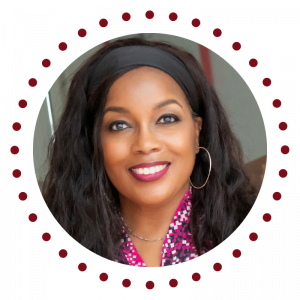
Want Karan to be Your Podcast Guest?
- Blended Workforces & the Gig Economy
- Critical Execution Tactics of High-performing Leaders
- Entrepreneurism & Leading Your Business
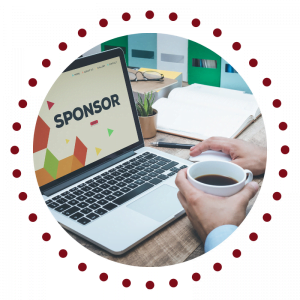
Want to be a Podcast Sponsor?
All sponsorships come with a featured spot on show notes pages.
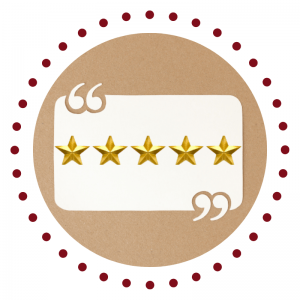
Like the Show? Please Leave a Review
If you like the show, it would mean the world to her if you left a quick review.
Your word is golden, so a HUGE thank you in advance!
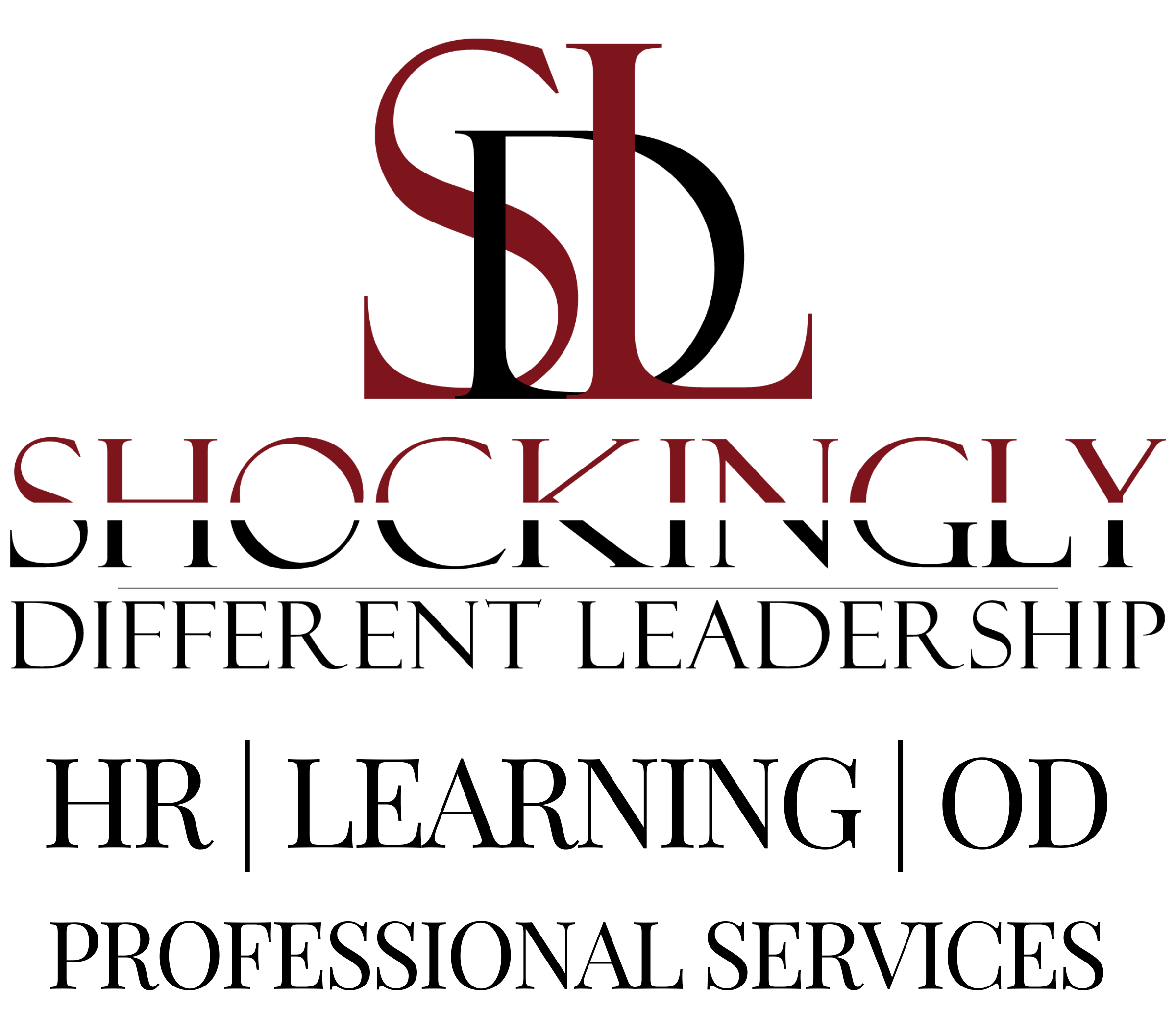
#KeepInTouch
via our podcast alerts
Subscribe now to discover why thousands of monthly listeners who are passionate about doing their best work prioritize time each week to listen to the Blended Workforces @Work podcast.
#AboutSDL
#WhereToFindUs
MAILING
4480-H South Cobb Drive
PMB 219
Smyrna, GA 30080
PHYSICAL
2121 NewMarket Parkway
Ste. 108
Marietta, GA 30067
#ContactOptions
Customer Service Email:
service@shockinglydifferent.com
Call or Text:
770-384-1103
#Office Hours
MON-FRI
8:30 AM – 6:30 PM
Weekends By Appointment

